Sony Alpha A7 (ILCE-7) and Sony Alpha A7r (ILCE-7r) Part 9 – FinalShowdown
It took me over 3 months and over 10000 shots with A7 and A7r, to get to the point where I am able to formulate at least partial opinion about those two Sony cameras.
Was I lazy?
Yes.
Where there other reasons why it took me so long?
Unfortunately yes…
In the last several chapters of this rolling review (links are at the bottom of this article, I tried to answer questions, mainly related to the importance of sensor size, resolution and impact of both for enthusiast photographers.
In the other words I tried to separate the wheat from the chaff, to see what are real benefits of full frame and what is just marketing hype.
Full frame despite its final sounding name is just one of the possible sensor sizes. There are larger formats and there are smaller formats.
Larger sensor in theory means more light collecting and thus improved performance in terms of resolution and signal to noise ratio.
Full frame sensor will allow you to use full frame lenses with their native FOV. No more crop factor calculations.
In terms of FOV/DOF it also means shallower DOF (at comparable FOV) compared to smaller sensors. Shallow DOF is however a double-edged sword, because for many applications such as macro, BIF etc. the opposite – larger DOF is better.
So far, those are all benefits of full frame, but…
The problem is when you put full frame sensor in a body that was originally designed for APS-C and at the flange distance that was probably too short from the beginning. (For high-res sensors)
From NEX7 we know about corner problems with some range-finder lenses, mainly wide angle – symmetrical designed lenses. This happens due to the steep angles of light rays hitting the edges of the sensor. Now imagine what happen with those rays when the sensor is even larger… To compensate, sensels on FF are larger (especially on A7) and thus micro-lenses f-stops are easier to design to to ensure a better transfer of light energy to the photoreceptors. But as you will see, with A7 and A7r it is not always the case.
Full Frame is not a Holy Grail. It has its benefits but it has also its shortcomings.
Let’s first see what are main differences between A7 and A7r.
In terms of design, differences are so subtle, that after 3 months I still don’t know which camera am I holding. Unless I look for the little red “R” at the front.
Another subtle difference is related to the control wheels at the top.
A7r (above) control dials are made of metal. A7 dials are plastic. Wow!!!
That’s basically it. What might be more important are differences in the construction. Both cameras feature magnesium alloy construction frame and back panel but A7r has also metal front panel and that might result in a somewhat higher endurance and integrity of the body. In practice however, I don’t see any quality problems (except probably cheap tactile feel) with more plastic on A7. I would say that large part of those design and construction “differences” are pure marketing crap.
Sorry I am wrong, there is full 9gr. difference in favor of A7r!
RESOLUTION
I spent lot of time in the previous articles trying to elaborate on the resolution. In figures it says that A7 file is 6000 x 4000px large while A7r capture 7360 x 4912 pixels.
In practice it manifests in a slightly larger image at the same viewing magnification
In terms of resolving power, larger file should give you more details and that is confirmed by ISO12333 crops
100% crops from A7 vs A7r, with A7 image being up sampled to match A7r file size
100% crops from A7 vs A7r, with A7r image being down sampled to match A7 file size
Original size images could be found here – A7 and A7r
Note that despite the fact that A7 feature AA filter while A7r don’t, there is much more moiré in the A7 image. Higher resolution and thus resolving power helps to reduce moiré in A7r images. But you will face situations, where moiré would be inevitable with both cameras.
So at the end, the most relevant difference in terms of resolution comes to greater possibility for cropping with A7r and an interesting 15+ mpx resolution in the crop mode (vs 10mpx of A7). That almost equal A7r crop mode with most other E-mount crop cameras (except NEX 7 and newly announced a6000), making it more flexible option.
PERFORMANCE
The second most important difference between A7 and A7r is related to the speed.
While A7 can shot at 5f/s with a fixed focus and disengaged live view, A7r can make it only 4. With AF tracking on and probably just in theory, A7r can fire at turtle speed of 1,5 f/s, while A7 runs all the way to 2,5 f/s.
Consider the recently announced Sony a6000, the new APS-C Sony’s flagship with proclaimed speed of 11 f/s with AF engaged – and entry price of 650 USD vs 1650/2290 USD and you have another strong argument to skip A7/r.
But there is more related to the speed – Auto Focus. Sony A7 feature Phase Detection on sensor, while A7r relies only on Contrast Detection. A7 actually uses both phase and contrast detection and thus is supposed to achieve AF faster, which is certainly welcomed in many situations. Sony says that its hybrid AF system uses phase detection to achieve fast rough focus and then switch to contrast to fine tune it.
In practice I haven’t noticed any major differences, but than I haven’t use any camera for fast moving subject tracking. One of the reasons why I didn’t, is the lack of native fast medium and long tele zooms, that I would normally consider for those situations.
The longest zoom in E-mount is the APS-C SEL 55-210 f4.5/6.3 lens, that on A7/r would work only in the crop mode (not only but that is what it is designed for). That was never considered to be particularly fast AF lens. On top of that, optical stabilization in this lens doesn’t work when mounted on A7/r bodies.
Sony FE 70-200 f/4 OSS might change the game significantly, but neither of Sony A’s is meant to be action camera anyway IMHO.
Considering the benefit of longer native reach of APS-C, I would strongly recommend NEX 7 or a6000 for anything that move faster than my monthly income. Basically – anything that moves at all.
Overall however, focus speed is not all that bad for most situations and with a native FE 35/2.8 is pretty fast and mostly accurate.
Following video clips will give you the idea about AF speed of A7 with FE 35/2.8 and SEL 55210 f/4.5-6.3 OSS, in different lighting situations.
Sony A7 and Sony FE 35/2.8Z
Sony A7 and Sony SEL 55-210 f/4.5-6.3 OSS in Crop Mode
Using longer lenses with fast AF, might reveal a field relevant benefit of A7, but on the other hand, A7r seems to lock focus slightly more reliable in bad lighting conditions, probably due to the higher resolution that help to resolve more contrast.
Anyway, neither camera is really a speed demon, and I don’t see much differences between them. With native – FE 35/2.8, both cameras are capable to AF fast enough for most situations. Tracking is another story, but I didn’t really test them for that.
While AF speed in Single shot mode is pleasant surprise, when new battery is inserted in either body, or after a while not using the camera, start-up time is unacceptable. It might easy take over 5s to get camera ready for the first shot.
When you switch cameras off, they are going to some kind of “sleep” mode but they are not completely off. After removing battery or after some unspecified amount of time, cameras are powered off completely. Recovering from true power off mode, takes just too long and Sony should do something about it.
Sleep mode on the other hand seems to consume some energy, and you shouldn’t be surprised if after day or two not using your camera, battery level goes significantly down.
A7 is supposed to have faster flash sync time than A7r. 1/250s vs 1/160s. I don’t have native Sony flash to test but using Pocket wizards an Canon flashes in manual mode, I was able to sync A7r at 1/125s an A7 at only 1/100s.Resuming performance differences between Sony A7 and Sony A7r – there isn’t much that you will notice in a daily normal use. NOISE AT HIGH ISOThis is one of the noticeable benefits of the full frame sensor. More light hits the sensor, sensels are bigger and as a result there is less noise at comparable ISO than with APS-C sensor. In one of my previous articles, I compared A7 and NEX 7 and there are samples showing noise performance of both cameras in a real life situation.
Here are comparison shots at ISO 3200 and 6400 between A7 and A7r cropped from the following image
A7 vs A7r ISO 3200 A7r image downsized to match A7
A7 vs A7r ISO 6400 A7r image downsized to match A7
Of course, by down sampling A7r image I give it benefit when it comes to noise comparison. I choose bilinear re-sampling method which was maybe not the best choice, but those comparison will always be slightly biased toward one or the other side.
My point from this comparison is, that in a real life, you will hardly find noticeable difference when it come to noise up to 6400 ISO.
If you are interested, you can check all ISO crops in this Flickr set. Right click on the image and choose “original” to open files in their original sizes.
DISCOVERED PROBLEMS (SO FAR)
Unfortunately introduction of new technology usually suffer from labor pain and while Sony A7 and A7r are not entirely new technology, they are first this small and affordable FF cameras with interchangeable lenses, offered on the market. There is also Leica M9 (240) of course, but it is larger and in entirely different price league. On top of that Sony A7r offers highest resolution sensor in mirror-less camera up to date.
The most serious problem that accompanies both cameras are related to already mentioned corner performance.
This is visible mainly with WA and especially UWA lenses. Here is an example, comparing Sony A7, A7r and Nikon D800E with a same lens – mighty Nikkor 14-24 f/2.8 G. One of the best UWA zooms for FF.
When we look at 100% crops taken from similar images with A7 and A7r, we will notice almost same center performance, but significant smearing (in comparison with Nikon) toward edges and corners.
To see and examine original size images, please go to this Flickr Set.
In my previous article – UWA lenses on Sony A7r, you will see how difficult is to get “clean” corners and edges even with some very fine UWA lenses, such as Canon TS-E 17/4 L e.g.
Sony A7 is slightly batter in that respect, but it isn’t flawless either.
This is for me the biggest issue of all, because I was hoping to replace my Nikon D800E as my main landscape camera. Unfortunately that ain’t going to happen…
Not brilliant corner performance affects both cameras A7 and A7R, as well as another issue – RAW compression and related software corrections applied in RAW.
I will not go deep in explaining what is going on there and why.
If you are interested, you can read a lot more here – http://www.fredmiranda.com/forum/topic/1247655/147#12028909 or here – http://www.dpreview.com/forums/post/52931809 and little about software corrections baked in RAW in my forum post here http://www.dpreview.com/forums/post/53060443.
As a result, images (files) that I am opening in Lightroom 5.3 (or IDC or even RAW digger) are all but “clean”. This makes results from both camera very unpredictable, which is a big problem for me, especially with long exposures that I am using often.
Unlike with possible improvement of corner performance, I still believe that Sony can add uncompressed RAWs option in the firmware upgrade to solve at least part of this issue, related to the smooth color transition without blotchy artifacts.
There are two more serious problems related to one of the other camera specifically – Sensor flaring with A7 and Shutter vibration of A7r.
Sensor flaring problem cause strange flare artifacts to occur in the image. This problem seems to affect A7 mainly. With A7r I didn’t notice it to be extensive.
You can read here – http://www.verybiglobo.com/?p=13 my little article dedicated to this phenomenon, but here is comparison with A7r that probably shows it more clearly.
Sony A7 and FE 35/2.8Z at f/16
Sony A7r with CV 35/1.2 Asph.II at f/16
and related crops of the problematic part
How serious issue it is for you, will depend on your shooting style. It is certainly serious for me.
I have read some comments on the forums from seemingly knowledgeable people, that the problem is caused by large dynamic range of A7/r cameras.
That is pure nonsense.
I discussed the phenomenon with the professor of the local physics university, who is specializing in optics and we made lot of test images from which he measured the flare diameters and shapes related to the focal length and optical construction of the lenses that he know well (Helios 44 e.g.).
He agrees (but as most professors, can’t guarantee:-)) that the most probable cause is the A7 sensor toppings and so, it is very uncertain that Sony will admit it and do something to fix it.
Fuji was the company that deserves my highest respect for facing the white orbs problems with their X100 while back, by offering sensor replacement. Canon is another company that in the past stood behind their products when problems occured.
Nikon and Sony are different in that respect. Unfortunately.
Next problem that I would like to mention here is related to A7r and shutter vibration induced image blur.
Sony A7 has electronic first curtain that can be used instead of the mechanical one. (But you can choose mechanical one if needed, for some high speed sync with strobes i.e.)
Sony A7r doesn’t.
As a result, Sony A7r shutter is extremely loud. (Small metal body with probably lot of empty space and huge shutter makes the capture sound like falling big drum from the fifth terrace to the empty concert hall.)
And as a result, Sony A7r suffers from so called shutter shock.
I spent lot of time testing A7r and couldn’t really find proofs for problem existence. But reading this forum thread – http://www.dpreview.com/forums/post/52804684, I made some additional tests and was able to emulate it.
Since than I realized that what formerly seemed to be just bad luck, when I saw some images from A7r being less sharp than those from A7, could be related to the problem of shutter vibration.
Here are two samples, both with long and heavy lens that has its own tripod collar. Canon EF 200/2 L IS USM.
Sony A7 + Canon EF 200/2 L IS at f/5.6
Click here for the original – http://www.flickr.com/photos/97543230@N02/12489479423/sizes/o/in/set-72157640924965725/
Sony A7r + Canon EF 200/2 L IS at f/5.6
Click here for the original – http://www.flickr.com/photos/97543230@N02/12489463983/sizes/o/in/set-72157640924965725/
When I looked at the results on the location, even magnifying them, I didn’t realize that something is wrong. Only when I got back home and processed files in LR 5.3, I realized that A7r image is far from being sharp.
For this big lens, I am using very sturdy tripod (designed to carry even Canon EF 800/5.6 L IS) and sturdy Gimbal head.
That this is not isolated problem you can see in the following crops from the similar situation and taken with the same equipment at different location.
For the full size image, click here – http://www.flickr.com/photos/97543230@N02/12489172165/sizes/o/in/set-72157640924965725/
In this case however, slight motion blur caused by camera shaking is hardly noticeable. But when you look at the wall structure in the bottom left corner, you can clearly see it.
How much of shutter shock is transfered to A7r images and in what exactly conditions is hard to say. Sony might help to solve this problem by adding optional delay between first curtain closure and opening, if possible of course.
So far, the problem is mostly manifested (to the noticeable extent) when using heavier longer lenses mounted on their own tripod collar. Some users reported that mounting certain additional weight to the bottom of the camera body (using tripod thread e.g.), will significantly reduce shutter shock vibration effect. I haven’t tried it yet.
Here is a little summary of differences and related field relevant importance between A7 and A7r
Design:
Few details, nothing important
Built Quality:
– A7r has metal front panel and is 9gr. lighter 🙂
Performance:
– In a single shot AF mode, AF speed is comparable and not bad. (With FE 35/2.8)
– A7 uses hybrid AF – combination of phase detection on sensor and contrast detection AF.
– I haven’t noticed field relevant difference in a single shot AF mode.
– Both camera takes too long to switch on from real Power Off mode and overall responsiveness is far from satisfying.
– There is no much difference between the two but A7 can capture 1 f/s more than A7r.
Image Quality:
– Both cameras have problems with corner smearing and color casting. – A7r delivers more details and allows for larger crops or prints (in rare occasions when you have to print extremely large). – Larger resolution of A7r is probably most noticeable in the crop mode, where output images at almost 16 mpx challenge existing E-Mount APS-C cameras (except NEX 7 and a6000 so far). That makes A7r universal 2 in 1 camera, taking the best from both worlds.
Issues:
– There are problems related to each camera specifically – Sensor flaring with A7 and Shutter shock vibration induced blur with A7r.– On top of that, there are reported problems with light leaking. It seems to occur around the mount ring. To test your cameras – mount the lens. wrap around whole lens black velvet or other light tight material. Set your camera to high ISO and let it expose for 20-30s. Check the image for exposed light patterns.
Conclusion – Which camera is better for me?
– Neither. Problems listed above will force me to sell both cameras. Put it simple – I don’t trust them.– I don’t know what should I expect after pressing the shutter.– What will happen with all those corrections and compression applied to RAW. It might end great, but “might” is not good enough.– I can’t find a good enough UWA lens for A7/r, that will use potential of the full frame sensor up to the extreme corners.
– I can’t be sure that shutter vibration or sensor flaring won’t ruin my exposure and I can’t be sure if light leak will not occur.
If you are not landscape shooter, and if you shoot lot in low light, I would suggest A7 above A7r. In 3 months of extensive testing, I got more sharp images from A7 than from A7r.
That is it.
The end of my adventure with A7 and A7r.
I am still considering to keep one of them for lens test purpose, but with all those software lens corrections, I am not sure if lens testing have any more sense. Maybe it does, if modern native lenses are not included. Unfortunately, due to disappointing corner performance, A7/R are probably not good even for that purpose.
Please note, that all written above is related to my shooting needs and preferences. You might find both cameras virtually amazing for you.
Photography is about compromises and the set of benefits in this case does not worth the shortcomings to me. Especially considering the initial price of both cameras.
Fortunately, there is still my NEX 7 with its original firmware and in combination with SEL 1018, SEL 24/1.8Z and legacy lenses, it makes brilliant landscape travel system. New a6000 at 650 USD launching price is according to the specification another great tool on the way.
Therefore I am not going anyway from Sony as a brand soon.
Just A7/r didn’t fulfill my expectations.
I wish they does yours however!
If Sony address any of the issues listed above, I will be happy to inform you and change my review respectively.
You can find several more test images in its original size (right click on them and choose “original”) in the Flickr collection here – http://www.flickr.com/photos/97543230@N02/collections/72157640924827115/
Other parts of the rolling review:
Part 1
Part 2
Part 3
Part 4
Part 5
Part 6
Part 7
Part 8
Thank you for reading.
Please help support this page and upcomming reviews and buy through affiliate links, with no extra cost for you:
Buy on BHPhoto: Alpha a7 Mirrorless Digital Camera
Buy on Amazon: Alpha a7 Mirrorless Digital Camera
To help this page survive, your donation will be highly appreciated.
![]()


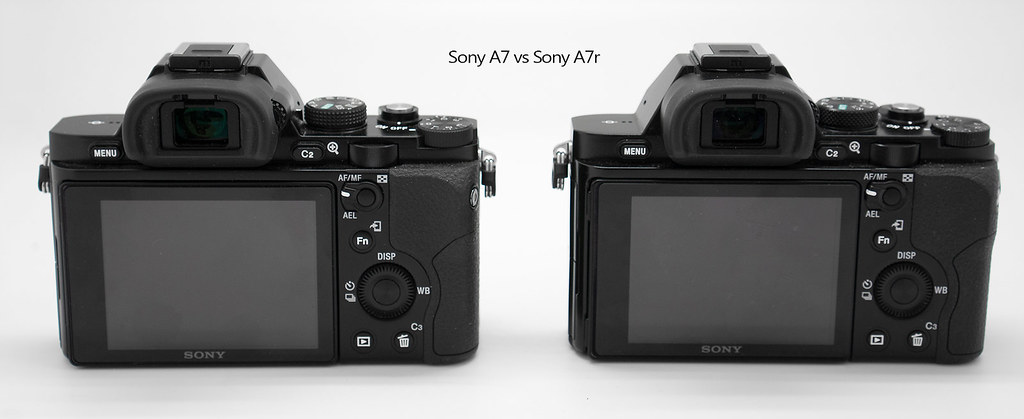
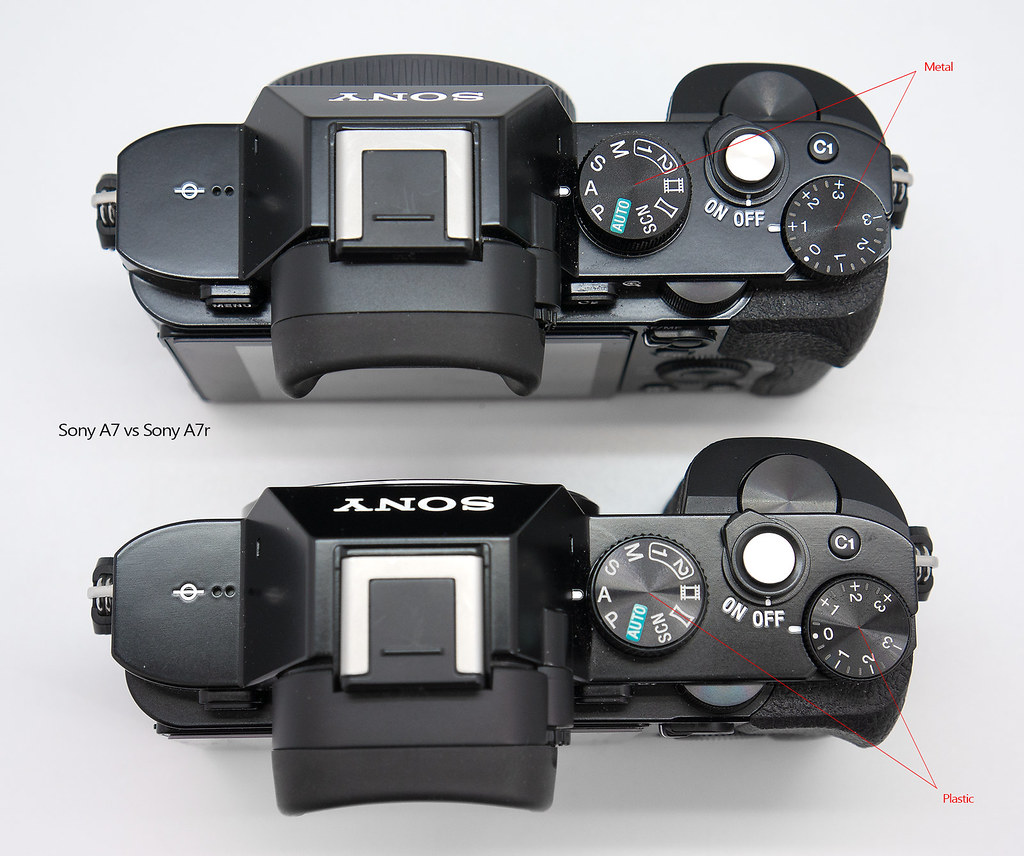
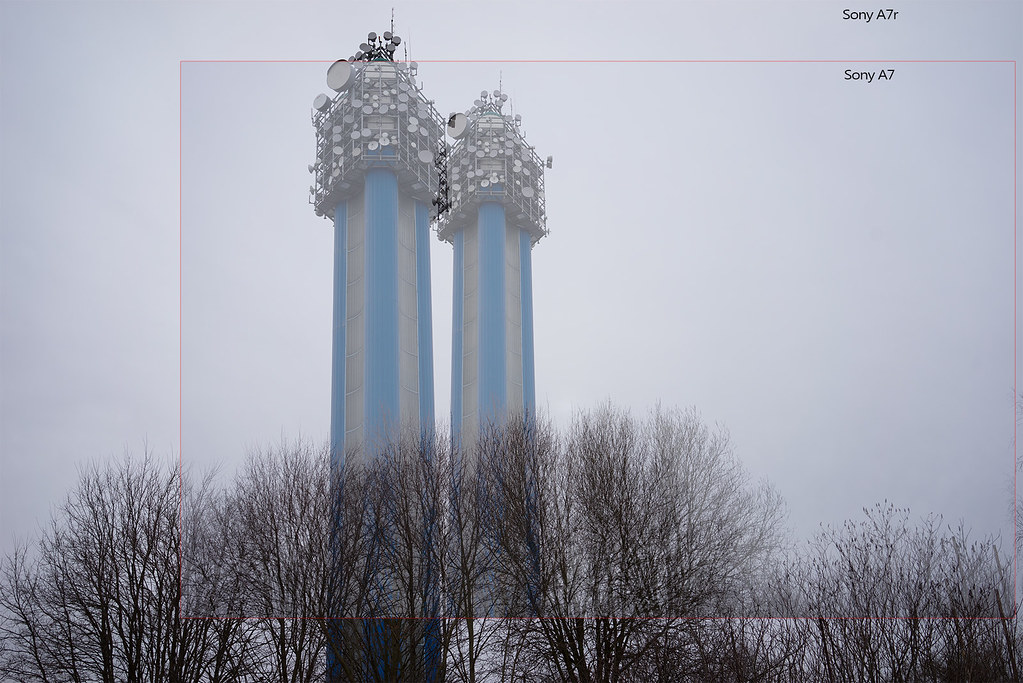
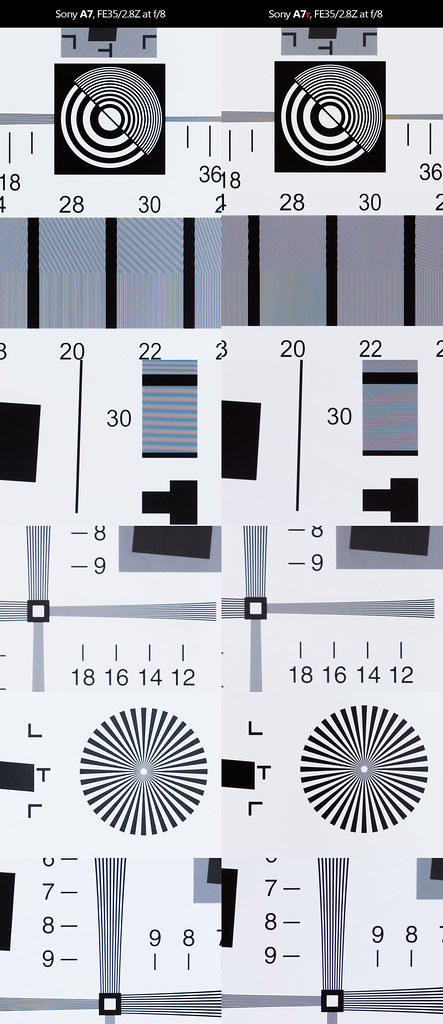

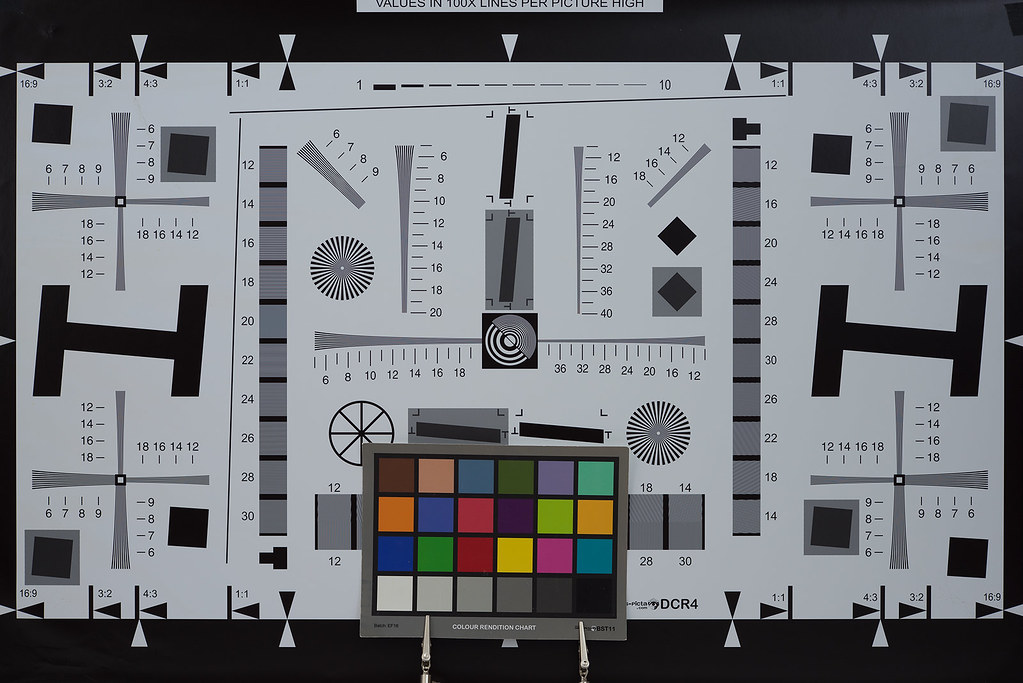
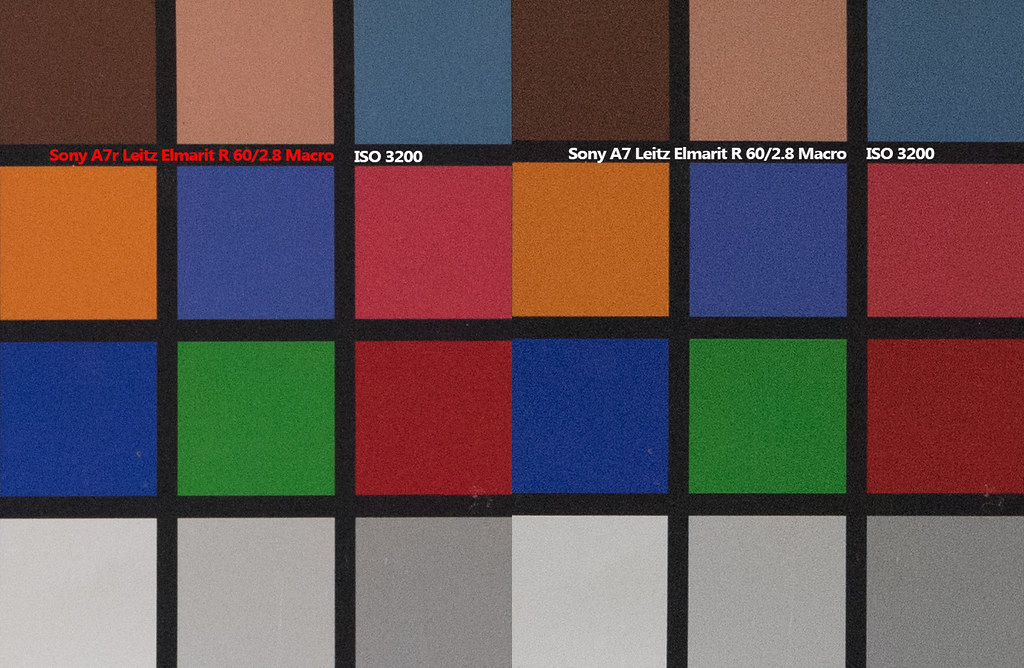
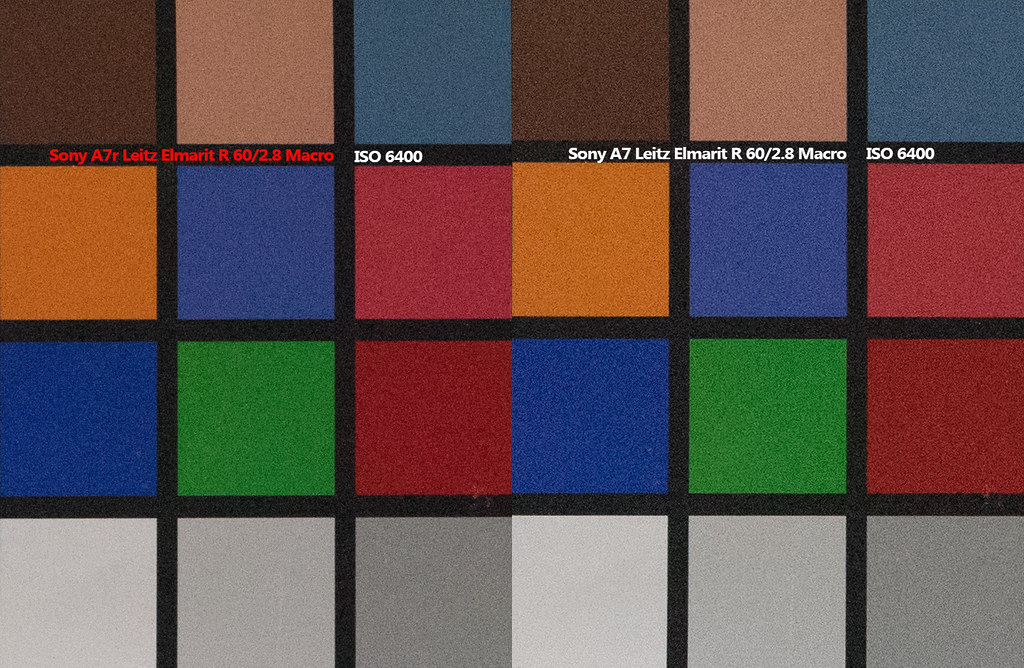


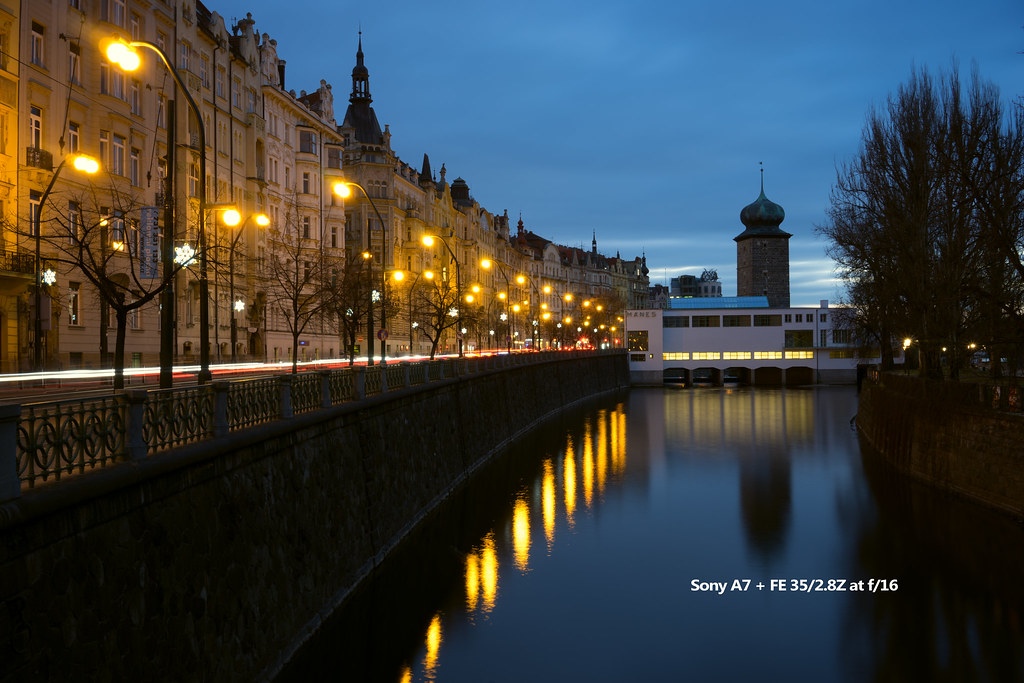

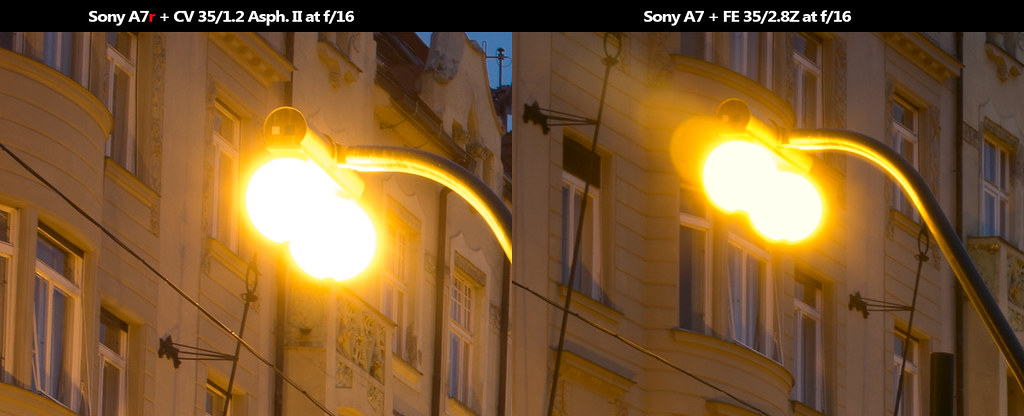
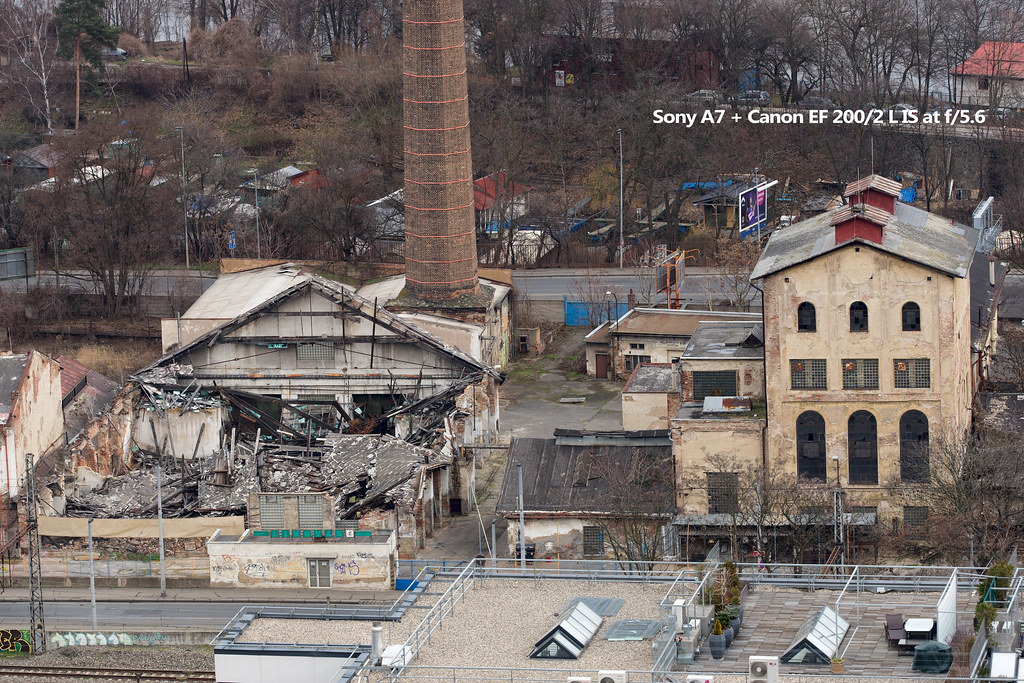
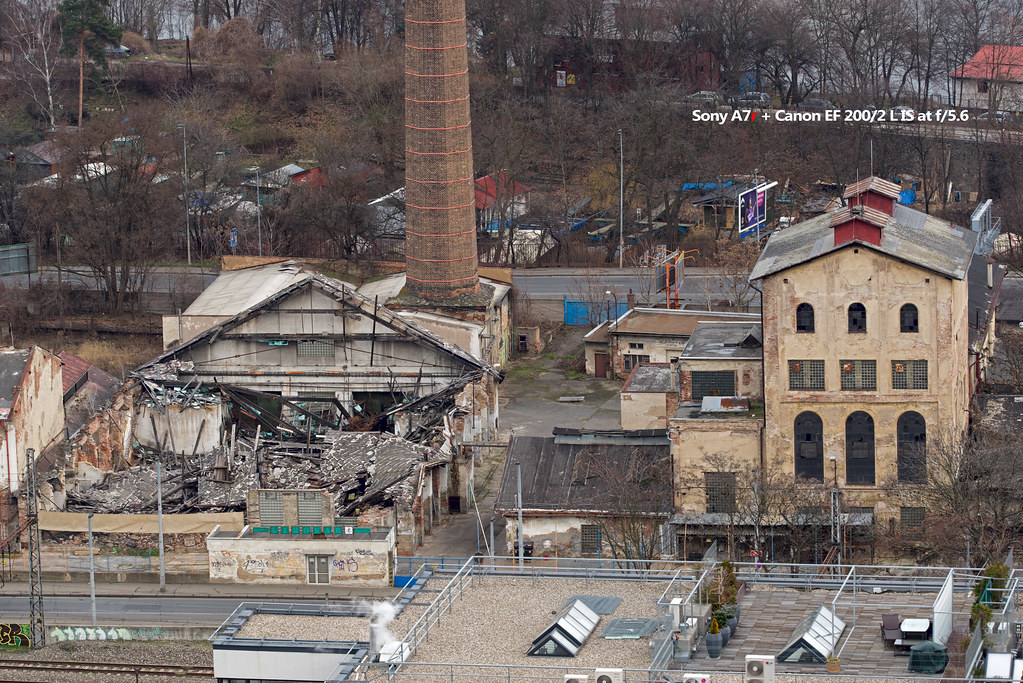
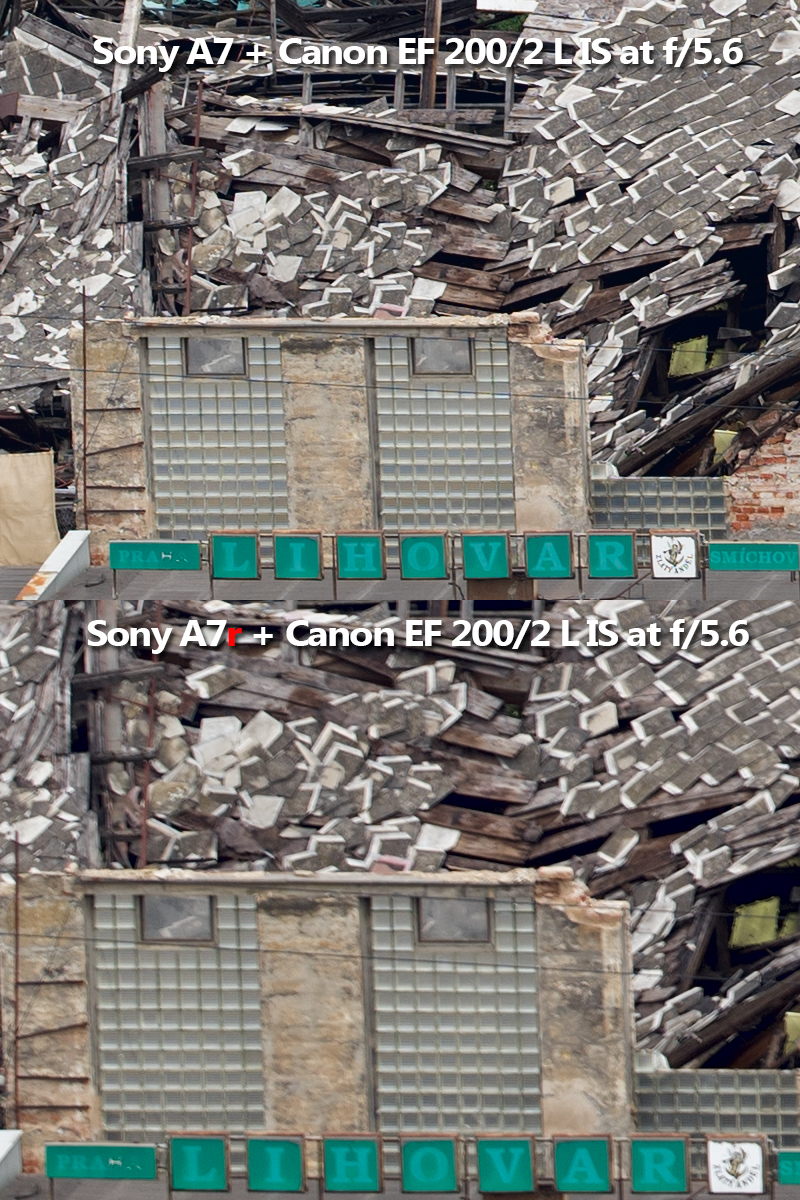
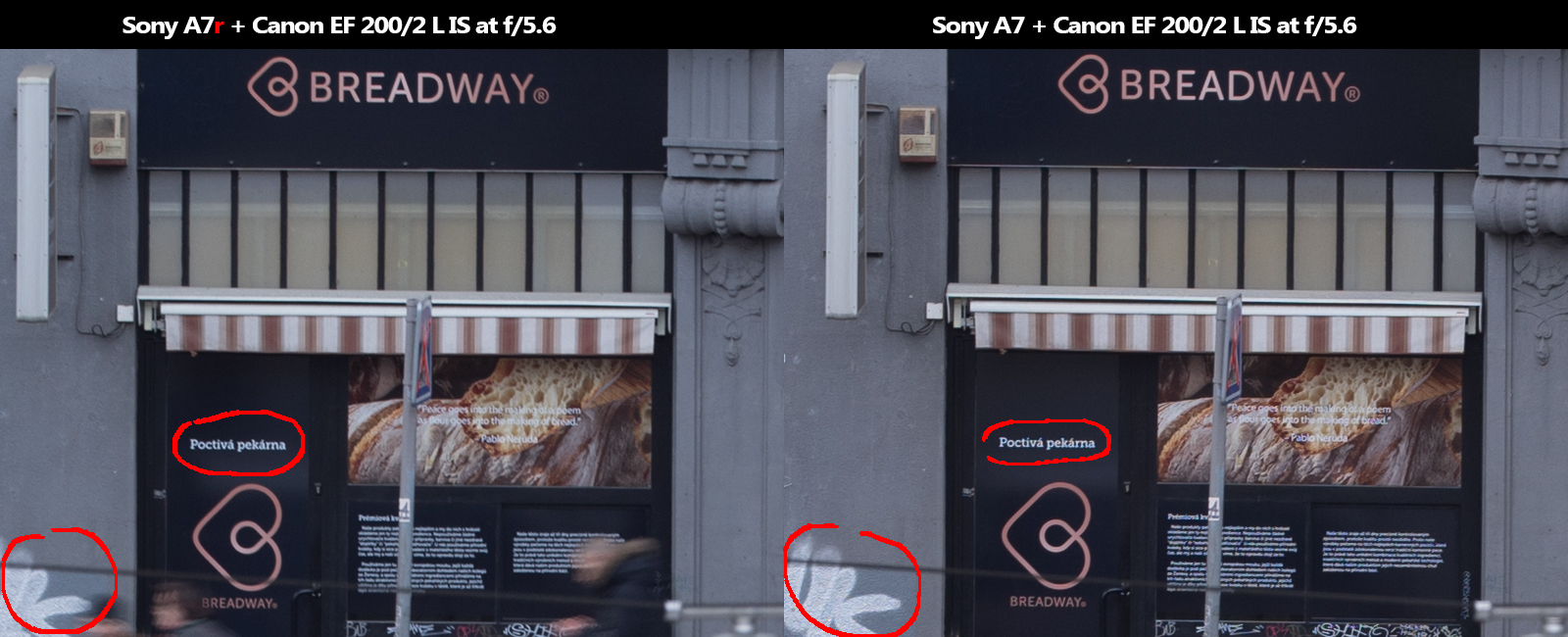
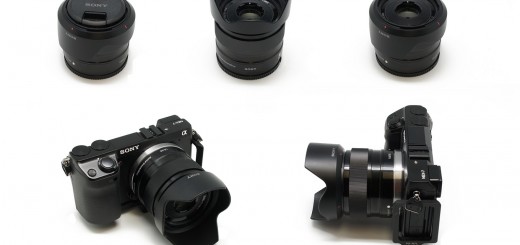
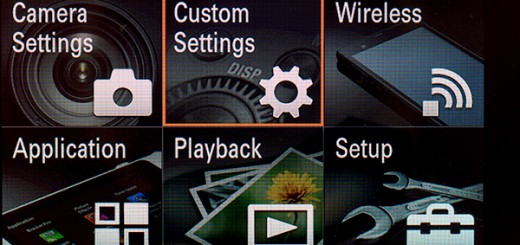














Ufff! That was quite a deflating conclusion! I am not quite sure whether I agree with all your points. The D800 shows that the lens is weak on both left and right side. In the extreme edges left and right bottowm, I can’t really see a difference in the foliage rendering. Considering that the A7 has significantly lower resolution, I have the impression that the dropoff is similarily. What would be VERY interesting, to see this shot with the Nex 7 and SEL1018.
This would put thinks into perspective and would help many with the question whether to stick with the APSC bodies or not. Do you think such a shot, even on another day with different weather is possible?
Thanks for all your work and the informative review, by the way!! Regards, cxspark
Hi mate,
I don’t think that I will make any more tests with A7/r. I made tons of tests and could publish only small part of it, and in my eyes, corner performance is significantly weaker on A7r than Nikkor D800E. At any aperture and with any lens that I can mount on both cameras. Look carefully in original images on the red house in the right image frame e.g. There is review where you can see comparisons between A7 and NEX7, so maybe that can help. Including NEX 7 with SEL1018 vs A7r and Nikon D800E is good idea, but more fair would be to compare it with A7 and Nikkor 14-24/2,8 e.g.
Maybe someone will find time to do it properly.
I am not insisting on my conclusion at all. As noticed above, It is related to my intended use and for that, both cameras are dissapointing. Let me repeat my main problem. – after 3 months of intensive use, I lost confidance that I will get clean, sharp images as with other cameras that I am using, including NEX7. Sometimes they are breathtaking but other times they are ruined with slight blur, strange color casting, corner smearing or/and sensor flaring. When I can’t rely 100% on my equipment (learning how to obey its limitations) it loose its relevance. I am sure that we would be able to see amazing captures with both cameras, but I am not capable to deal with their issues.
That is why I bought Fuji XT1. 🙂 APC sensor, kicks ass.
X-T1 has worse flares than A7…..duhhhh read some reviews.
Regading the wide angle corner issue: Have you considered that the lens adapter could be tilted a bit? So image center would be in focus, but sides would not be. Did you captured the same image with various focus distances to disprove that posibility?
Accidently while reading on unrelated topics on DPreview forums I have seen this post:
http://www.dpreview.com/forums/post/53174070
where a guy claims that 14-24 worked badly with two cheaper adapters, but it works perfect (better than D800E) with pricier Novoflex adapter. While other non-wide lenses worked ok with all adapters. Which further supports my tilt theory.
I tried most of UWA lenses to see if there is significant de-centering issue, but that wasn’t a problem in my tests. The problem would probably manifest in a lab conditions and there is always slight de-centering but not only with the adapters involved. To test for the field relevance of de-centering, I usually shot normally, at 90 degrees and with camera upside down. If the pattern of smeared area moves with the camera rotation I report it. This however wasn’t the case in my UWA tests.
BTW, I am using Novoflex – Nikon G to E-mount adapter.
Thanks for suggestions,
Viktor
Another suggestion of what may be different when Nikkor 14-24/2.8 is mounted on A7(r) aside of tilt/alignment could be in a glass stack on sensor. See:
http://www.lensrentals.com/blog/2014/06/the-glass-in-the-path-sensor-stacks-and-adapted-lenses
Interesting. I would wait however to see more definite conclusions from Roger. I am not sure at which focus distance they tested on the bench and that can affect results as much as additional glass in the optical path or aperture opening. In other words – every lens design is optimized at only one focus distance. Changing that distance will change MTF results (quite significantly), with similar effect as adding additional glass in the light path, because the refraction indexes would change. On top of that, additional glass might change magnification and I am sure it does to certain extent. That can also affect resulting MTF. Roger used “some optical glass” that he found around. We can’t be sure what optical formula is used for sensor stack.
I am still convinced that most important for resulting MTF on different cameras would be applied micro-lens layer, but the linked article shows once again, how hard is to establish empiric standard for lens testing….
Hi,
Just a question regards Nex 7 – you mention original firmware – what differences does this make?
Thanks Steve
I wrote a lot about it in some older posts, related to RAW cooking by Sony. In short, with the later firmware 1.01 and following, Sony added more extensive software corrections hard coded in RAW files. It resulted in sometimes odd color casting across the frame, but the main problem I had was related to Metabones smart adapter version 1. Using that adapter for Canon EF lenses with fw 1.01 and later, resulted in significant greenish cast (counter mask for magenta casting with most WA lenses) in most shots.
Finally, I found RAW lossy compression that Sony uses slightly less blotchy with original firmware.
For most users though, new firmwares brought valuable improvements (bracketing, better low light focusing) that overweighted those few shortcommings.
Thanls for your posts. Quite informative. Having a look at the A6000 over here. I have not yet seen purple corners with the Sigma 19mm.
Sigma 19 wasn’t bad on the NEX 7 either, but overall, A6000 has a sensor that delivers much better performance at the edges and corners than NEX 7 in all respect. Adding very good high ISO performance, we can assume that 2-3 years in sensor development pays well off.
Thank you for looking,
Viktor
This comment has been removed by a blog administrator.
Hi Victor
A good review of the cameras. Like you, I want to use one of these for my hiking/landscape photography to lower the weight and the from factor of my canon 5dii.
I tested my 17ts with a metabones on the a7 the other day, but could not work out how to set the aperture on the sony body. Would you be able to tell me how to do this?
Also, i am considering getting the zeiss ze 21mm which is also a manual focus without the aperture ring which is fine for the 5dii, would this talk to the sony to give the aperture info. I see that you used the ze 21 on the sony body, hence my question.
Thanx
Karl
Hi Karl,
that sounds strange. Check if the lens is well mounted, and maybe clean contacts on metabones, lens and camera. It should work normally like with any other sony E-mount lens. You might try also “advanced” mode. Press the button on the metabones adapter and keep it pressed until you mount lens on it.
If nothing help, send a message to Metabones, they are usually very keen and rather fast to reply. Let me know if you make it work.
Cheers,
Viktor
This was simply an enjoyable read (: Thank you very much!
I’m now VERY curious to see a similar comparison (that you did in part 6) of the a7 vs NEX 7, but rather a7 Vs a6000. Either way, due to this long report, I’m glad to have an a6000 on the way in the mail (: Thanks again!
ps: your avatar is hilarious
The test for flare is inaccurate. A7 has flares with 35/2.8 and 55/1.8 but I am yet to see the issue with 3rd party lenses. Sorry but this review is not very good. You should test cameras with the same lenses.
Hi Kiril,
you don’t have to be sorry. If you don’t see the problem, don’t look for it. I am just not sure what you mean by same lens? I used different lenses within whole review but comparisons of the sensor flare were done always with a same lens, one of them being 3rd party as you name it – http://www.verybiglobo.com/sony-alpha-a7-ilce-7-and-sony-alpha-a7r-ilce-7r-part-7-a7-sensor-flare-problems/
Cheers,
Viktor
P.S Due to the limited space bellow each article, if you want to continue debate on this issue, please use forum section and open related thread. Otherwise I will have to deleate your posts. Thank you for understanding.
I do not understand the issue with flange distance. The distance between sensor and rear lens element is a result of the lens design only.
The flange distance only defines where the lens metal ends and the camera body metal starts. It should have no influence on a third party lens.
Thomas, your argument is correct in theory, but in practice the flange distance also changes the angle of incidence at which the light hits the sensor. Old UWA lenses were made for use on film and a sharper angle wasn’t a problem, because film is a one-dimensionally flat surface. Sensors on the other hand are 3-dimensionally flat…they’re conceptually made of buckets. The surface of the sensor is of course flat, but the actual dectector for each pixel sits in its own bucket just beneath the surface. Light hitting the sensor at 90 degrees will just shoot straight into the bucket without touching the sides, but as rear elements of lenses get closer to the sensor (as happens in UWA lenses), then the angle of incicence at the extremities of the sensor become so acute that the light particles don’t enter cleanly. Some will bounce around before hitting the detector and others will simply bounce off and never reach the detector. This is what causes magenta cast and smearing.
Back in the early days of the NEX-7, Carl Zeiss published a paper explaining this phenomenon on APS-C. Unfortunately, I couldn’t find a link to post here. But if you hunt around, you can find it.
Thus, what Viktor is saying is this phenomenon, which exists on APS-C, is simply exacerbated on full-frame, because the flange distance is even less optimal at preventing the effect.
It’s useful to note that Leica was one of the first companies to hit this problem in its M9. Its solution was to hard code its firmware to compensate for the colour shift by adding colours to the image before writing it to the storage card. Having electronic registers between lens and body, meant it could have a separate colour profile for every lens that exhibited this problem. On NEX and Alpha7, there is no electronic connection, therefore no way to compensate for this in camera. All we can do is compensate for it in post.
Lens manufacturers such as Zeiss and Voigtlander have now adjusted their old lens designs to work more optimally on digital. e.g. the Voigtlander 15mm Heliar III now works pretty well on A7 and A6000, when its predecessor was awful. But note the lens is now much bigger as a result.
http://www.sonyalpharumors.com/very-first-voigtlander-heliar-15mm-iii-review-on-the-a7r-and-a7ii/
p.s. as to how lens manufacturers are changing their designs, I’m guessing, but I suspect it has something to do with moving the rear lens elements forward so they’re not so close to the sensor. This would explain why Zeiss Loxia and Voigtlander lenses are a bit bigger than previous designs.
True… the mirrorless designs demand small lenses which can have this problem.
But a normal SLR lens on an adaptor has the rear elements of course at the same distance from the sensor as always.
Short flange distance will enable ‘problematic’ designs to be made. But it does not stop anybody from making well-working designs, perhaps with telecentric imaging.
A long flange distance does limit the design space more. But the lenses look compact on the store shelves.
Superb article. Regarding shutter-shake, presumably it will be less pronounced when the A7r camera body is mounted directly onto the tripod?
and in this scenario will having a really stable tripod nullify the effect completely?
For example, screwing the A7r onto a brick wall is a workaround that should work…I think Sony should publish this in the troubleshooting section of the manual 😉
In the images you took, what shutter speeds where you using? Is there a magic shutter speed to focal length ratio beyond which shutter-shake disappears?
Sorry lots of questions.
Hi Anthony,
a) No. Basically any lens with A7r might show shutter shake involved blurriness at certain condition (shutter speed, DOF, distance from the subject etc. ) Most pronounced problem is when camera is in portrait orientation and lens is mount on the tripod. Super tele lenses are not possible to use on tripod otherwise (too heavy for the mount).
b) Stable tripod doesn’t play a big role here, but a really weak one will probably involve more shake. Mounting camera on the brick could help (it will depend on the strength and type of the mount itself), but I can’t imagine this in practice 🙂
c) I believe I wrote shutter speeds used above, but it will always depend on the particular camera/lens combination. In general, most affected speeds are between 1/60s and 1/500s.
Cheers,
Viktor